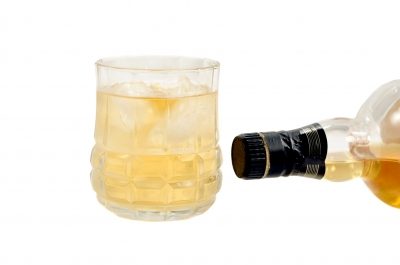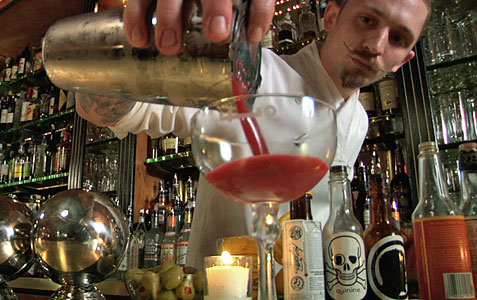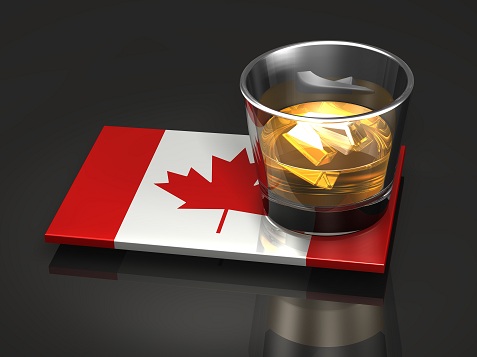3 Liquors Hip-Hop Heads Love (and Recipes for Each)

Free image courtesy of FreeDigitalPhotos.net
Liquor is a staple in the hip hop world.
Flashy cars, hot girls, stacks of money, and of course … the partying.
Rappers like Eminem, 50 Cent, Ice Cube, Notorious B.I.G., Tupac, and many others get behind their brands. There is no shortage of the hard stuff whenever you catch one of their videos and if you happen to catch them in a club you’ll quickly see them poppin’ bottles at a table.
This love for the booze has even gone as far as to catch the attention of researchers which found that out of 700 top billboard hits almost 23% of them had some mention of alcohol.
The question becomes … which ones and what kind of drinks can you make with ‘em?
1. Wild Turkey
Whiskey and bourbon are two fine choices you’ll often hear mentioned in videos.
These are the drinks of gangsters – to whom many rappers try to replicate at least in image.
The aged drink shows sophistication and says that you’re not just there to chug down grain alcohol.
Of these brands, the Island of Kentucky has been putting out some of the best.
At around 86 proof (43% alcohol) you can expect to get turned up on one of these bottles.
If you want to drink with sophistication than consider the Sazerac:
• 2 oz Bourbon Whiskey
• 1 tsp Ricard Pastis
• 1 tsp Water
• 2 dashes Peychaud Bitters
• 1/2 tsp Superfine Sugar
• 1 twist of Lemon Peel
Preparation
Chill an old-fashioned glass. In a separate mixing glass, muddle the sugar and Peychaud bitters together. Add the whiskey and ice to the bitters mixture and stir. Rinse the chilled glass with Ricard Pastis by pouring a small amount into the glass, swirling it around and discarding the liquid. Strain the whiskey mixture from the mixing glass into the old fashioned glass. Garnish with a lemon twist.
Recipe courtesy of Snooth.com.
2. Patron
Ah, Patron.
The tequila that doesn’t taste like the devil and a favorite among rappers.
Patron is going to set you back a bit of money depending on the size of the bottle (expect to pay about $45 and up for a decent size) but it’s worth it once you taste the difference.
You ain’t going bottom-shelf on this one.
This legendary alcohol has been a favorite among rappers for decades. Tequila is usually one of those drinks that completely floors you but everyone has seemed to take a liking to Patron (probably because it doesn’t give you the rot gut, massive hangover the next day, as easily).
Drink with style via Patron Diablo:
• 1 1/2 oz Patron Silver Tequila
• 3/4 oz Creme de Cassis
• 1/2 oz Lime Juice (fresh)
• 1 splash(es) Ginger Ale
Preparation
Fill cocktail glass with ice then add the Patron Silver Tequila, Creme de Cassis, and fresh Lime Juice. Top off with Ginger Ale. Garnish with a lime wedge.
Recipe courtesy of BartendingMadeEasyandFun.
3. Hennessy
Cognac.
Now there’s a drink for the ages.
Hennessy go real popular once the hip hop crowd found it with big mentions by the likes of Tupac, Biggie, Drake, Dr. Dre, Wu-Tang, and a bunch of others. The reason why you’ve probably heard of the name is most likely because of a hip hop song.
Drinking it straight is always choice but if you want to be adventurous then try a Tap that Ass:
• 1 oz Hennessy® cognac
• 1 oz Alize® Red Passion liqueur
• 1 oz Alize® Gold Passion liqueur
• 1 splash cranberry juice
• Top with soda water
Preparation
Fill the hurricane glass with ice. Pour the Hennessy, Red Alize, and Yellow Alize. Splash in some Cranberry Juice and top it off with soda. For garnish you can add a slice of pineapple and cherries.
Recipe courtesy of Drinksmixer.
Conclusion
If you’re thinking about stocking up one some booze for your next party or if you just want to have some around the house than these three choices are great for building up that stock.
You don’t have to party as hard as the hip hop heads but you can certainly drink like ‘em.
Try out some of the mixes, too.
Remember: you don’t always have to drink it straight from the bottle.
You can follow us on Twitter and Facebook for content updates. Also, sign up for our email list for weekly updates and check us out on Google+ as well.



 Sometimes referred to, particularly in Canada, as rye despite the fact that it’s primarily made with corn spirits, Canadian whisky, unlike now resurgent American rye whiskey, never threatened to go away. Still, while some uninformed bartenders still think rye is just the name of a type of Jewish bread, it’s the rare bar that doesn’t stock Seagram’s V.O., Canadian Club, Crown Royal and often Black Velvet. Its the even rarer connoisseur or cocktail aficionado who will admit to being excited about them, with some liquor snobs deriding Canadian as “brown vodka.” Following their lead, younger drinkers who have taken to premium brands of bourbon and Scotch, have largely ignored it. That’s not to say unassuming Canadian Whisky has no fans among the cognoscenti. We kind of love it and no less an authority than cocktail historian
Sometimes referred to, particularly in Canada, as rye despite the fact that it’s primarily made with corn spirits, Canadian whisky, unlike now resurgent American rye whiskey, never threatened to go away. Still, while some uninformed bartenders still think rye is just the name of a type of Jewish bread, it’s the rare bar that doesn’t stock Seagram’s V.O., Canadian Club, Crown Royal and often Black Velvet. Its the even rarer connoisseur or cocktail aficionado who will admit to being excited about them, with some liquor snobs deriding Canadian as “brown vodka.” Following their lead, younger drinkers who have taken to premium brands of bourbon and Scotch, have largely ignored it. That’s not to say unassuming Canadian Whisky has no fans among the cognoscenti. We kind of love it and no less an authority than cocktail historian 








